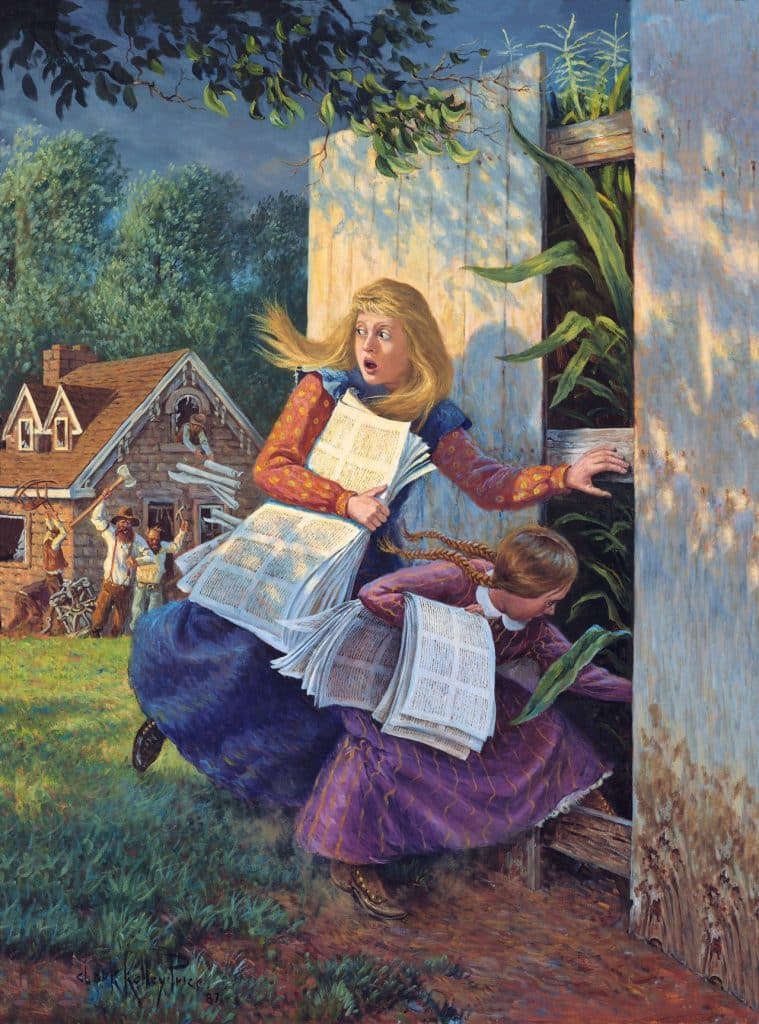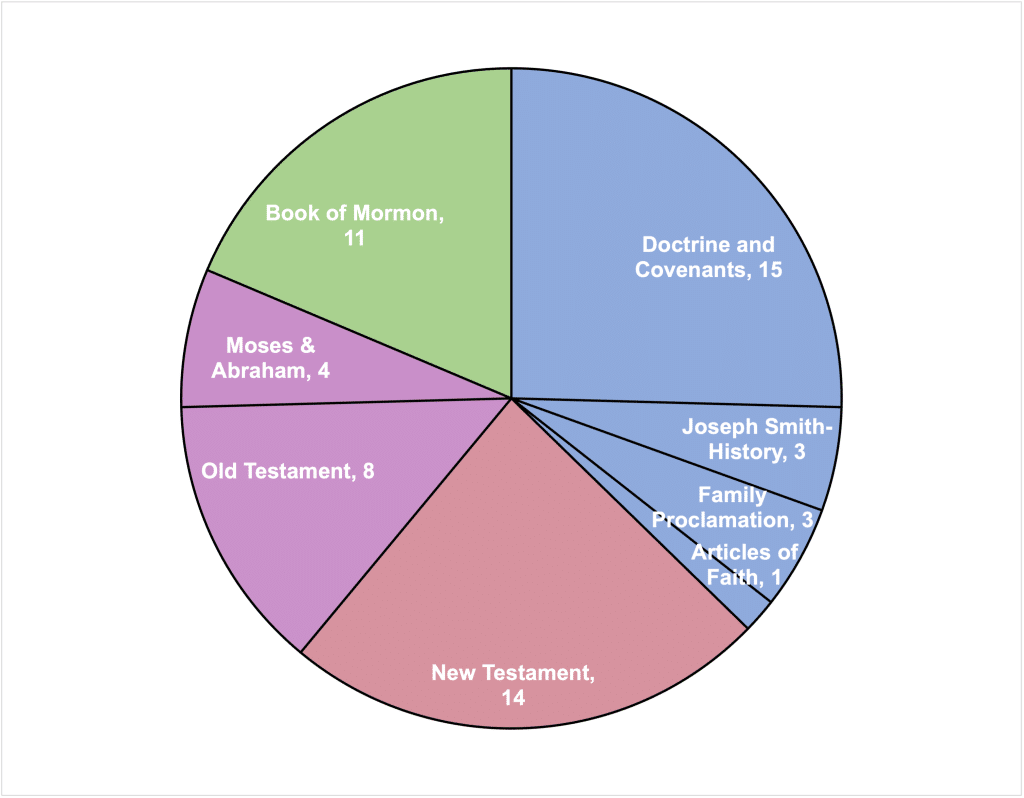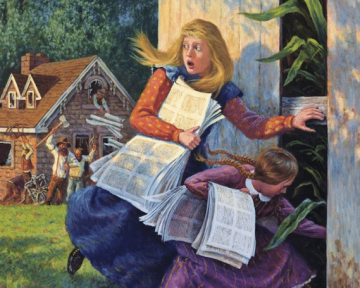If I had to guess, I would have guessed the Book of Mormon. After all, when I was a youth, it was drummed into my head that “the Book of Mormon is the keystone of our religion,” and that we would “get nearer to God by abiding by its precepts, than by any other book.”
I’m showing my age here. I guessed the Book of Mormon because I was a youth of the 1990s, ushered into the youth program under the reign of Ezra Taft Benson, who served as president of the LDS church from 1985-1994.
Joseph Smith was the first president of the Church of Jesus Christ of Latter-day Saints (LDS) to call the Book of Mormon our keystone, but I’m pretty certain that Ezra Taft Benson said it more often. Centering church curricula around the Book of Mormon was one of the key initiatives of Benson’s presidency.
Things have changed since the ’90s. A different book in our canon was used far more often in youth lessons during the 2010s.

I found out which book church leaders really liked while prepping the Exponent website for a big change in the youth curriculum coming in 2024. The LDS church will discontinue the Young Men and Young Women curriculum format that has been in place since 2013 in favor of using the same Come Follow Me format currently used for Sunday School. (Primary will use that same manual, too. Yes, you heard me right. Grown-ups in Gospel Doctrine and wee babes in Primary will study the same curriculum.)
Young Men and Young Women classes will join Sunday School classes to undertake a chapter-by-chapter study of the Book of Mormon that lasts for a full year, followed by a year of studying Doctrine and Covenants, then a year of the Old Testament of the Bible, and finally a year of the New Testament. (Or should I say, during that third year we’ll study Genesis and Exodus for half the year and then whip through the rest of the Old Testament? Good grief, curriculum writers, the Old Testament curriculum has a pacing problem!)
The 2013-2023 Young Men/Young Women curriculum that is going away was centered on gospel topics. Each lesson was titled with a gospel question answered by a variety of scriptural and contemporary sources relevant to the question. Within that topic-based format, we were studying the scriptures, but that format did not rigidly require that we devote exactly 1/4 of our lesson time to each book of scripture, like the new 4-year rotation does.
At the Exponent, we had created over 100 Young Women lesson plans based on the old curriculum. It would be a shame to let such a treasure trove go to waste, so in preparation for 2024, I combed through every Young Women lesson plan in our archive. If a lesson plan centered primarily on just one book of scripture, it would fit with the new curriculum, so I recategorized it as a lesson plan for Book of Mormon year, Doctrine and Covenants year, New Testament year, or Old Testament year.

When I finished up, there was a clear winner: Doctrine and Covenants by a landslide. I was able to reuse 22 old youth lessons for the Doctrine and Covenants curriculum. New Testament claimed 14 lesson plans, Old Testament got 12, and Book of Mormon came in dead last with only 11. (President Benson would roll over in his grave.) There were 43 lesson plans that either centered on contemporary sources or were too evenly mixed in scriptural sources to fit within the one-book-at-a-time format of the new curriculum.
In the new curriculum, the hodgepodge of books in the Pearl of Great Price are divided among other curricula: Joseph Smith-History and the Articles of Faith join the Doctrine and Covenants curriculum, Moses and Abraham join the Old Testament curriculum, and Joseph Smith-Matthew joins the New Testament curriculum. The Family: A Proclamation to the World also gets a space in the Doctrine and Covenants curriculum, making it the only uncanonized source text.
These additions partially explain why the Doctrine and Covenants curriculum beat out the others so handily. For the first several years of the 2013-2023 curriculum, youth lessons were organized around 12 monthly themes. One monthly theme was the Apostasy and Restoration, a historical period documented in Joseph Smith-History as well as Doctrine and Covenants. Another full month was devoted to Marriage and Family. Our modern concept of marriage and family as a gospel principle is largely absent from the standard works, so these lessons largely relied on the Family Proclamation for source text.
But even if we exclude these additions, Doctrine and Covenants still comes out on top. That’s because three of those monthly themes from the 2010s centered on priesthood; Prophets and Revelation, Priesthood and Priesthood Keys, and Ordinances and Covenants; and as much as we like to say that our modern church is patterned after Christ’s ancient Biblical church (especially when we’re defending archaic practices like the female priesthood ban), the truth is, the only scriptural source for most of our modern priesthood doctrines and policies is Doctrine and Covenants.*
* And actually, our current policies and doctrines around priesthood don’t even follow Doctrine and Covenants very closely. Much of the work defined as priesthood duty in Doctrine and Covenants is assigned to unordained women in our modern church, while other tasks are restricted to male priesthood holders without any scriptural basis for banning women and other non-priesthood holders. For several examples, see this analysis:






7 Responses
Thank you for doing all that work going through the lesson plans! I’d missed that the curriculum is changing next year. Lesson plans are how I came across Exponent in the first place!
I love that people find Exponent when they look for lesson plans! And yes, it was a lot of work going through all the old youth lessons. I hope people keep finding and using them in years to come!
After years in the church, I am not one bit surprised. The emphasis has pretty much always been so very centered in Joseph Smith’s restoration, priesthood, and worship of patriarchal families. Those are the things that make us different than all the other Christians. I have whined to my husband for years about how the church spends so much time on the things that came after 1820 and so very little time on Jesus. Look at the lessons the missionaries use. They don’t convert you to Christianity. They start with an assumption of Christianity. In 1970 my brother was on a mission in Korea. He said that Buddhists had a real problem hearing the message because they really really needed to be converted to Christ before restoring Christ had any meaning to them. So, I suppose that the emphasis has always been on the same things, even when Benson was trying to push the Book of Mormon. He was really pushing Joseph Smith as the person who brought us the BoM.
That is such an interesting point about our missionary lessons starting with the assumption of Christianity. I served in a predominately Christian country, so that worked, but I can imagine that the same standardized format would not work at all in other places.
April you are the best! Thank you for repurposing so many lessons!
This doesn’t really surprise me. The BoM as keystone of our religion never really had much to do with its contents. It had far more to do with proving JS was actually a prophet and therefore Mormonism was the one true church. All part of the insultingly simplistic logic informs basically every aspect of the church’s approach to religious education. Seen through that lens , teaching D&C more makes perfect sense, since it is the most current revelation and the history of that one true church.
Yes to everything. But especially the fact that there is a serious pacing problem with our study of the Old Testament. It’s like 6 weeks in the Garden of Eden, 2 months in Genesis, 2 in Exodus, and then zip zip zip through the rest of the books.